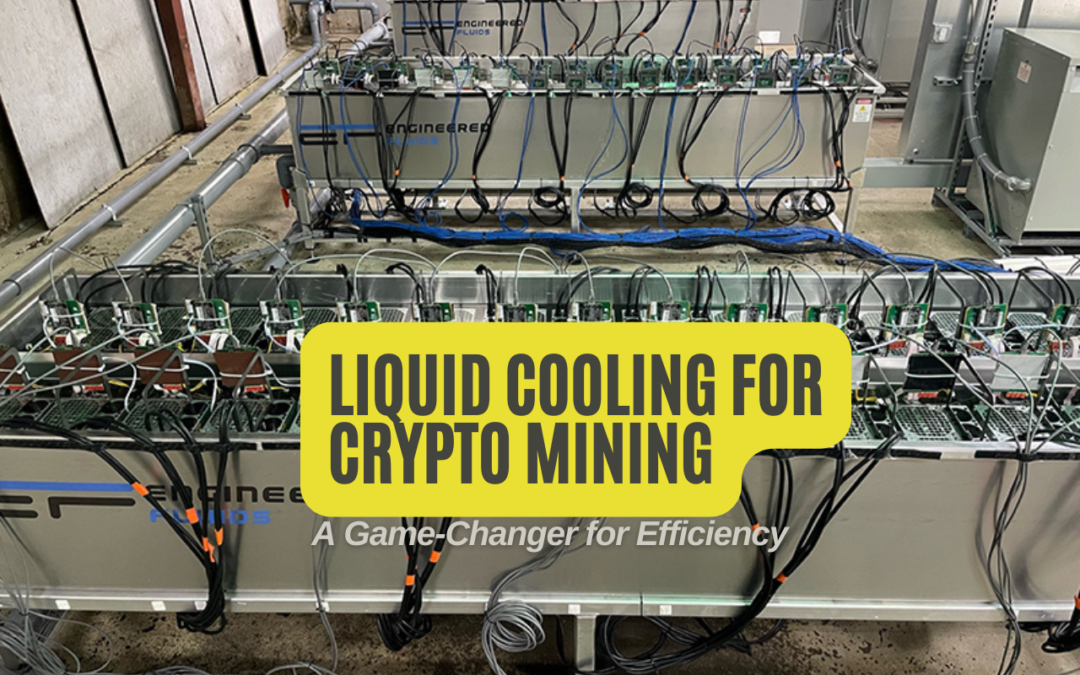Crypto mining has become an arms race where efficiency, performance, and sustainability dictate profitability. As miners strive to maximize returns while battling rising energy costs, hardware wear, and heat management challenges, liquid cooling emerges as a transformative solution.
Unlike traditional air cooling, which relies on fans and air circulation, liquid cooling delivers superior thermal regulation, enabling mining rigs to operate optimally under heavy workloads. Let’s dive deeper into how liquid cooling works, its advantages, and challenges, and why it’s increasingly being seen as the future of crypto mining.
Why Traditional Air Cooling Falls Short
- Inefficiency in Heat Dissipation
Air cooling depends on fans to push hot air away from mining equipment, but as hardware becomes more powerful, the heat generated increases exponentially. Managing this heat with air alone requires larger and more powerful fans, which consume significant energy. - Thermal Throttling
When temperatures rise beyond safe operating limits, hardware components automatically reduce their performance to prevent damage. This “thermal throttling” reduces mining efficiency, costing miners valuable hash rates and profit. - Increased Costs and Maintenance
Air cooling systems are energy-intensive and require frequent maintenance, especially in dusty or humid environments. Over time, dirt accumulation on fans and heatsinks can degrade cooling efficiency and damage components. - Environmental and Noise Concerns
Air cooling contributes to high noise levels and carbon emissions, making mining setups less sustainable and less suitable for urban or residential areas.
How Liquid Cooling Works in Crypto Mining
Liquid cooling involves transferring heat away from components using a liquid medium, which is far more effective than air at absorbing and dissipating heat. There are two primary approaches:
1. Direct-to-Chip Liquid Cooling
This method uses cold plates attached directly to components like GPUs, CPUs, or ASIC chips. Coolant is pumped through these plates, absorbing heat and carrying it away to a radiator or heat exchanger where it is released.
2. Immersion Cooling
In immersion cooling, the entire mining rig is submerged in a specially designed dielectric fluid that is non-conductive and non-corrosive. The fluid absorbs heat directly from the components, and a circulation system removes the heated fluid, cooling it before recirculating it back to the rig.
Advantages of Liquid Cooling
1. Unparalleled Thermal Efficiency
Liquid cooling systems transfer heat away from components more effectively than air cooling. Coolants have a higher thermal conductivity, allowing them to dissipate heat faster, keeping temperatures consistently low even during peak loads.
2. Boosted Hash Rate and Performance
Maintaining optimal temperatures prevents thermal throttling, allowing miners to push hardware closer to its maximum performance. Some miners even use liquid cooling for safe overclocking, extracting more power from their equipment without the risk of overheating.
3. Energy Savings
While liquid cooling systems have an initial energy draw for pumps and chillers, the overall energy usage is lower because they eliminate the need for power-hungry fans and extensive HVAC systems. This efficiency can lead to substantial cost savings over time.
4. Reduced Noise and Environmental Impact
Liquid cooling systems operate more quietly than air-cooled setups, significantly reducing noise pollution. They are also more environmentally friendly, particularly when paired with renewable energy sources.
5. Extended Hardware Lifespan
By preventing excessive heat buildup, liquid cooling reduces wear and tear on components, extending the lifespan of expensive mining hardware.
6. Compact, Space-Efficient Designs
Liquid cooling enables denser hardware configurations, allowing miners to maximize the use of limited space. Immersion setups, in particular, can pack more rigs into a smaller footprint without compromising thermal performance.
Real-World Applications of Liquid Cooling in Crypto Mining
- Large-Scale Mining Farms: Companies like Bitmain and Core Scientific have adopted liquid cooling for their industrial operations to reduce costs and increase profitability.
- Home Mining Enthusiasts: Small-scale miners are increasingly exploring DIY liquid cooling systems to manage heat and noise in home setups.
- High-Performance Overclocking: Liquid cooling particularly appeals to miners who overclock their hardware to achieve higher hash rates without risking damage.
Challenges of Liquid Cooling
Despite its numerous advantages, liquid cooling is not without its drawbacks:
1. High Upfront Costs
The initial investment for liquid cooling equipment, including pumps, radiators, tubing, and coolant, can be significant. Immersion systems, in particular, require specialized tanks and fluids that add to the expense.
2. Maintenance Requirements
Liquid cooling systems demand regular maintenance to prevent issues such as leaks, coolant degradation, or pump failures. In immersion systems, dielectric fluids may need periodic replacement.
3. Technical Complexity
Designing, installing, and maintaining liquid cooling systems requires expertise. Improper setups can lead to inefficiencies or even hardware damage.
4. Compatibility Issues
Not all mining hardware is designed with liquid cooling in mind. Retrofitting GPUs or ASICs for liquid cooling may void warranties or require custom modifications.
Is Liquid Cooling the Future of Crypto Mining?
The global cryptocurrency mining industry is moving toward more sustainable and efficient practices, driven by rising energy costs, environmental regulations, and the need for a competitive edge. Liquid cooling is well-positioned to meet these demands, offering:
- Greater profitability through reduced operating costs
- Higher performance and scalability for industrial mining farms
- A sustainable alternative for eco-conscious miners
Advancements in liquid cooling technology, such as two-phase immersion cooling, are making the systems more efficient and accessible. As the technology matures, its adoption is likely to expand, especially among large-scale miners who can offset the upfront costs with long-term savings.
Conclusion
In the ever-evolving landscape of cryptocurrency mining, staying ahead requires innovation. Liquid cooling represents a quantum leap in mining efficiency, offering solutions to heat management, energy consumption, and hardware longevity. While the technology demands significant investment and expertise, its potential to transform mining operations is undeniable.
For miners willing to embrace the change, liquid cooling isn’t just an upgrade—it’s a game-changer. Whether you’re running a small home setup or a massive mining farm, investing in liquid cooling could pave the way for greater profitability and sustainability.
Are you ready to future-proof your mining operations with liquid cooling? Let the transformation begin!











